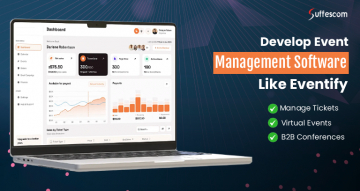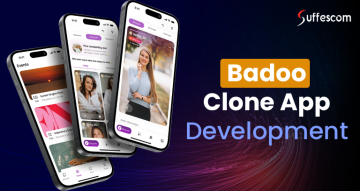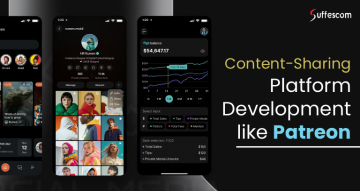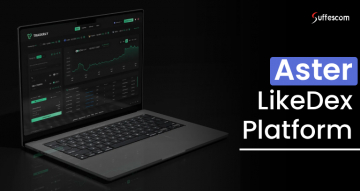DiDi Clone Development to Skyrocket Your On Demand Business

By 2025, the global ride-sharing market is projected to reach $175.73 billion with a CAGR of 4.9% and is anticipated to achieve a market volume of US$212.75 billion by 2029. The DiDi application provides marvelous services such as ride-hailing and food delivery. This complete package platform enables companies to optimize their work with an enhanced admin panel, providing a better customer experience and broader market coverage.
Considering the drastic boom in the market, DiDi Clone is the ideal investment for companies that wish to ascertain profitability without having too much complexity when developing an app similar to DiDi.
DiDi Clone provides enterprise ride hailing and food ordering app development services, lowering operational expenditure. Integration with digital wallets and coupon codes increases user retention, stimulating revenue. With minimal startup investment and significant ROI potential, the DiDi Clone is a lucrative opportunity for businesses wishing to ride high on monetary success and expand their market presence.
Workflow of DiDi Clone Moto Ride App
The DiDi clone is a custom-fit platform that mimics Didi's primary features and working process. We have illustrated everything in detail below.
1. User Registration
Initially, the drivers and passengers register within the app using valid identification proofs such as email, social media, and phone numbers.
2. Ride Booking
The passenger inputs their location, i.e., pickup and drop off, and selects the type of ride they like.
3. Driver Matching
The algorithm pairs the passengers with the drivers available in the nearby location.
4. Live Tracking
The in-built GP functionality allows passengers to track the current driver's location and view their estimated arrival time.
5. Payment processing
The payment is made using multiple payment methods via secure gateways.
Drive Success With Our Feature-Rich DiDi App Clone
DiDi Clone App Development for Different Platforms
1. Android
Utilize our expertise and build a feature-rich mobile app for the Android platform using Kotlin or Java. Tech stacks like Retrofit are used for API calls, Android Studio, and Jetpack Compose for a scalable and intuitive interface.
2. iOS
Built with programming languages like Swift and MapKit integration for GPS navigation, it delivers a smooth user experience on Apple devices. Firebase handles push notifications, and CoreLocation handles geolocation with SwiftUI or UIKit, ensuring a responsive UI.
3. Web app
Such apps are accessible through web browsers and are built using React.js, which supports dynamic UI and Node.js for backend purposes. Moreover, the data is managed with MongoDB, and real-time updates are enabled by real-time updates, ensuring scalability and compatibility.
Features of Didi App Clone
Discover the distinctive features of the DiDi clone app with three primary panels like passenger, driver, and admin app to uplift the user experience and keep them engaged. As a trustworthy taxi app development company, our experienced professionals will help you instil the attributes driving optimal business success.
a. User App
1. Booking & Scheduling
Enables the passengers to instantly book rides at their convenience by providing pickup and drop-off points, or even schedule a ride at a specified date and time.
2. Live Ride Tracking
Allows riders to monitor the driver's location as to where they have reached, and view their
estimated time of arrival (ETA) via interactive map.
3. Diverse Payment Methods
Enables the passengers to make payment from multiple modes like credit/debit cards, digital payment wallets and cash.
4. Ride History
Enables users to view their past rides, past destinations travelled, drivers rated, transactions, and feedback given to enhance service quality.
5. Multi-Language Support
With this feature, users from different parts of the world can access the interface in their native language to capture a global audience.
6. SOS button
Provides real-time trip details sharing with loved ones like family and friends in case of emergency situations.
b. Admin Panel
1. User Management
Admins can accept/reject driver sign-ups, manage user accounts, and ban users/drivers for misbehavior.
2. Reports and Analytics
Valuable insights are fetched, and detailed reports are generated graphically, making for data-driven decisions.
3. Fare and Category Management
Helps add, edit, or delete vehicle categories, configure pricing, and control surge pricing during peak hours.
4. Promo and Referral Management
Allows admin to create and issue promo codes or referral programs to keep customers returning and maintain user satisfaction.
5. Ride Management
Helps view and manage all scheduled ride requests, including details like pickup locations and payment methods, while tracking maintenance schedules.
6. Customer Support Tools
Enables the admin to handle user queries, complaints, and reviews efficiently and address the issues at the earliest.
c. Driver App
1. Profile Management
Allows drivers to add and edit their personal information, vehicle, and documents upload for verification purposes.
2. Ride Requests
With this feature, the drivers accept, reject, or view active ride requests depending on location and availability.
3. Earnings Dashboard
Helps track daily, weekly, or monthly earnings, including bonuses and ride details, keeping drivers informed about their income.
4. Availability Toggle
Allows drivers to switch between online and offline modes to manage work hours, giving them more control over their schedules
5. In-App Communication
Enables drivers to chat, call passengers, or contact admin support directly, enabling smoother and faster communication.
6. Navigation Integration
GPS-based navigation with voice instructions is helpful in route optimization, allowing drivers to avoid traffic congestion and reach their destinations on time.
Key Steps To Build DiDi Clone
The process of clone app development starts with determining the most critical features from a user's point of view, drivers' expectations, and how the business model would generate revenue. From the research, a clean-cut business and technical requirement emerges, which is the guideline for food and ride sharing app development.
1. Market Research & Requirement Gathering
The initial phase of creating a DiDi clone involves extensive market research to understand user expectations and rival tactics. It includes discerning the most critical features from a user's point of view and drivers' expectations, and exploring the strategies that help businesses generate ample revenue.
2. Planning & Prototyping
Once the requirements are determined, the planning stage outlines the project scope, timeline, milestones, and role definitions. A wireframe is designed to focus completely on the user interface and user experience, which encompasses the passenger app, driver app, and admin dashboard. Interactive mockups are designed using tools such as Figma or Adobe XD to assist stakeholders in finalizing the user flow and identifying usability issues before development.
3. Frontend Development
This stage aims to create responsive and intuitive interfaces for drivers and passengers. The passenger app offers registration, booking, tracking drivers, trip rating, and online payments. The driver app features toggling availability, trip acceptances, navigation, and earnings reports. The user interface must be implemented so as not to impact the user experience even under diverse network conditions.
4. Selecting The Tech Stacks
Choosing the right technology stack is essential. For a DiDi clone, cross-platform mobile apps are developed using React Native or Flutter, the backend using Node.js or Django, and the database using MongoDB or PostgreSQL. Real-time features such as GPS tracking and live updates are usually based on WebSockets, Firebase, or MQTT. The tech stacks need to be scalable, secure, and effective in serving concurrent users and real-time data exchange.
5. Backend Development
The backend is responsible for user authentication, algorithmic ride matching, price determination, dispatch logic, trip history, and other related functions. It also includes third-party APIs like payment gateways (Stripe, PayPal), map services (Google Maps API), and SMS gateways to send notifications. Security measures like data encryption, OAuth2 authentication, and rate limiting are of the utmost importance here.
6. Testing & QA
Quality assurance is a comprehensive process that includes unit testing, integration testing, performance testing, and user acceptance testing (UAT). All the unwanted bugs and errors are removed from the DiDi Clone app, elevating performance and efficiency.
7. Deployment & Launch
Once successfully tested, the application is released to app stores (Google Play Store and Apple App Store), and the backend is deployed to cloud providers such as AWS, Google Cloud, or Azure. DevOps technologies such as Docker, Kubernetes, and CI/CD pipelines automate deployment, followed by quick launch.
Why Do Businesses Consider a DiDi Clone a Good Investment?
Building an app like DiDi allows businesses to gain remarkable entry into the booming food and taxi business. Businesses can tailor the app according to their brand standards and compliance with local laws, which helps cut development time and cost. This enables businesses to establish themselves in the market quickly, without much capital cost.
Another significant benefit is scalability and market flexibility. The DiDi Clone is built to cope with growing user numbers, making it perfect for businesses looking to expand from local to regional or even international markets. Its support for multiple languages, wide payment gateway integrations, and adjustable features guarantee that it can serve diverse demographics and geographic locations.
The multiple revenue streams associated with an app like DiDi make it a desirable investment. Platform owners earn money from ride commissions, surge, driver subscriptions, in-app ads, and corporate affiliations. The various sources of revenue guarantee profitability even in saturated markets.
Moreover, brand visibility and customer engagement are also elevated. Businesses establish a loyal customer base by offering a seamless, convenient experience with real-time rider tracking, secure payments, and rewards programs. The amalgamation of operational effectiveness, customer satisfaction, and market presence makes the DiDi Clone attractive for firms pursuing high ROI within the ride-hailing and food delivery sector.
Scale Your Business With Our Cost-Effective DiDi Clone App Development Solutions
Revenue Model of DiDi Clone App
The revenue model of a DiDi Clone application is made to provide businesses with stable revenue from various sources by capitalizing on the platform. Some of the major revenue streams are as follows:
1. Commission fees
The foremost revenue source is a commission on each ride requested using the platform. This commission is deducted from the driver's pay, providing stable revenue as the number of rides increases.
2. Surge Pricing
Dynamic pricing imposes higher fares during peak time or peak demand, resulting in increased revenues. The app’s algorithm increases rates based on demand, location, and time, making maximum profits without paying additional operational expenses.
3. Subscription Plans
Subscription plans (e.g., monthly or annually) can be provided to drivers for premium perks such as reduced commission rates, priority ride allocation, or increased visibility. This ensures steady revenue and encourages driver loyalty.
4. In-App Advertising
Businesses can earn money from the app by selling ad space to local companies, car rental services, or companies in the same industry. Banner advertisements or sponsored offers within the driver and rider apps also generate extra revenue.
5. Cancellation Fees
Charging a small fee from users for canceling rides deters abuse and generates an additional revenue channel.
6. Premium Services
Providing luxury or niche rides (e.g., premium vehicles, carpooling) for higher prices attracts premium users, boosting revenue per ride.
DiDi Clone App Development Cost: Factors Overview
The cost to build a Didi app clone ranges from $8000 to $20000, depending on parameters such as platform choice, project complexity, and personalization needs. The key factors influencing DiDi clone app development cost are;
1. Platform Choice: Native (iOS/Swift, Android/Kotlin) vs. cross-platform (Flutter, React Native).
2. Features: GPS, real-time tracking, payments, driver dashboards; advanced AI or wallets add cost.
3. Design: Custom UI/UX vs. pre-built templates.
4. Backend: Scalable infrastructure (Node.js, MongoDB, AWS).
5. Team: Experienced developers or offshore agencies.
Get in touch with our experts and start your development journey now!
Why Choose Us As A Reliable Development Partner?
Suffescom is an established mobile app development company in USA, with a solid business-strategic move for startup entrepreneurs that wish to develop a scalable, feature-rich platform. Dive straight into our enterprise-level solutions and witness how we are different from our peers.
1. Rapid Development and Launch
Provides you with a quick development timeline to launch the DiDi clone app with unique features, enabling an easy launch on the desired operating systems.
2. Cost-Effective Solutions
Transparent pricing and complimentary consultations assure no surprise expenses, minimize development costs, and allow entrepreneurs to generate high ROI.
3. Advanced Features
Our development team uses state-of-the-art AI-powered features that provide users with seamless experiences and meet their demands.
4. Worldwide Presence
Our international reputation is supported by happy clients from all parts of the world, with a track record of 1,000+ apps, making us a trusted partner.
5. Full Support and Maintenance
We offer 24/7 technical assistance and continuous updates to ensure the DiDi clone app is bug-free and optimized after launch, ensuring hassle-free business operations.
6. Proven Expertise
We have delivered 500+ successful projects in different industries adopting a client-centric approach, delivering a customized, scalable platform tailored to brand requirements.







